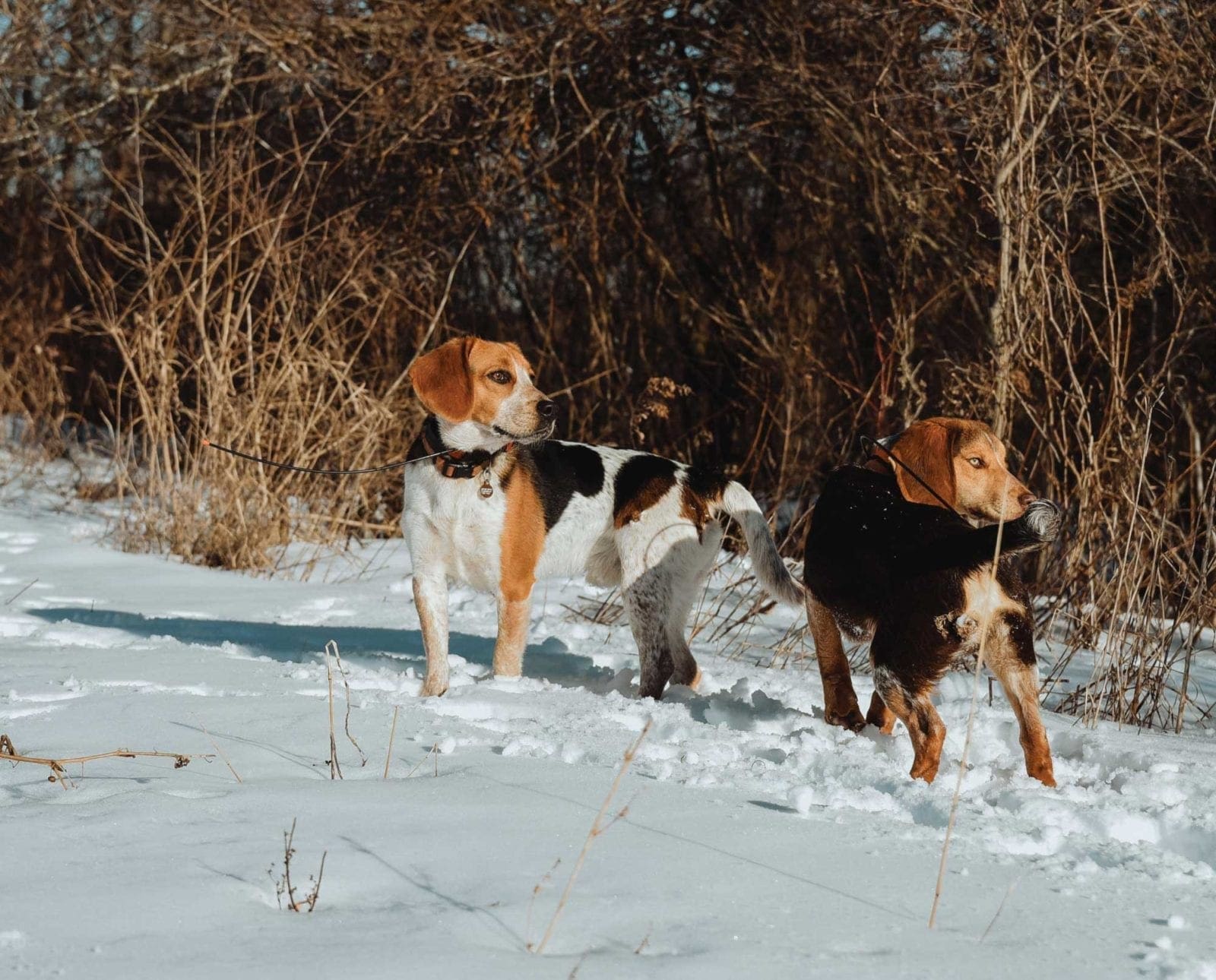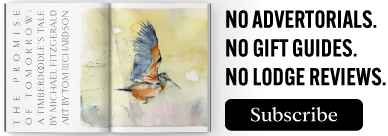Home » Hunting Dogs » The Beagle – An Overview of North America’s Popular Rabbit Dog
The Beagle – An Overview of North America’s Popular Rabbit Dog

Logan Hamilton works as an enforcement officer in Nova Scotia,…
Thinking about getting a beagle for hunting rabbits?
The beagle is a commonly known small breed of hound that typically ranges between 13-15 inches in height at the shoulders. Generally weighing 20-35 pounds, beagles come in tricolor (black, white, and tan), lemon, blue tick, and a variety of other color configurations. Although known throughout the world for their fun-loving and curious nature as house pets, beagles were traditionally bred to hunt small game animals in packs hundreds of years ago in England.
Due to their small stature and thick fur, beagles can easily maneuver through dense brush in order to pursue small game animals. Today in North America, beagles are most commonly used to hunt snowshoe hares and Eastern cottontail rabbits by using their keen sense of smell to find and pursue them until their human companions can make a successful harvest. Beagles have a natural prey drive and can be trained to hunt snowshoe hares and rabbits by even the most novice of hunters with patience and positive reinforcement. The expected life span of a beagle ranges between 12-15 years.
How hunting with beagles works
As heard in old-fashioned movies, the saying “release the hounds” can relate to hunting with beagles as well-trained hounds will get straight to business when released in the field. After being set loose by their master, beagles instinctively search nearby thickets and dense cover for snowshoe hares or rabbits. When a beagle finds one, they instinctively bay (prolonged loud bark) in order to alert other dogs and human hunters that one has been located.
Using the scent of a fleeing snowshoe hare or rabbit, beagles will follow the animal continuously baying until it is harvested or the scent is lost. In order for a snowshoe hare or rabbit to be harvested, it is the responsibility of the hunter to predict where the animal will run and strategically wait for it to appear to make an ethical shot.
Notably, experienced hunters will only release their beagles in areas where there are openings or shooting lanes through thickets to ensure the safety of their dogs while using firearms. It is also good practice for hunters to use bells and tracking collars while hunting with beagles to ensure that they can be easily located and retrieved if needed. Typically, speaking from personal experience, snowshoe hares and rabbits lead beagles by at least 30-40 yards when being chased. However, this distance may vary depending on the weather, scenting conditions, terrain, dog stamina and so forth.
Can you hunt snowshoe hares or rabbits with one beagle?
The simple answer to this question is yes. Although bred to hunt in packs, a well-trained beagle can hunt flawlessly by itself. In fact, many experienced hunters and trial goers believe that solo hunting beagles helps to boost their confidence in the field. It is also a common belief that beagles who frequently run by themselves more readily search and find prey than others as they learn how to work cover without relying on other dogs. Personally, I believe the true benefit to hunting with more than one beagle is that more ground can be covered and all beagles (just like humans) share different characteristics (speed, scenting abilities, etc.) which can go hand-in-hand while in the field.
Beagle clubs, tests, and trials
The first beagle field trial was held in the late 1800s. That is a lot of years of development, breeding, and culture into the hounding world. Both the United Kennel Club and the American Kennel Club have testing programs in place for beagles. The National Beagle Club of America is the club that handles the American registry for the AKC. Events are held all over the country to continue the development and advancement of the breed in United States.
Considerations to make before getting a hunting beagle
Beagles are very curious and energetic in nature and require a fair amount of exercise. It is recommended to exercise beagles daily (walking is fine) and to run them in a hunting setting a couple times per week if possible. Beagles used for hunting can easily live indoors without any issues and tend to be great dogs around children and household pets (aside from rabbits). Typically, beagles are easy to train, are very food motivated, and are not prone to many serious health concerns. Notably, beagles have the tendency to bark and howl, which is something important to note if living in an apartment or in the confines of a city environment.
Logan Hamilton works as an enforcement officer in Nova Scotia, Canada. He has the opportunity to work with dogs on a daily basis and spends the vast majority of his free time hunting snowshoe hares with his two beagles. Logan stays busy during the summer by hiking, target shooting, and fishing with his family and friends. However, the first snowfall of a long Canadian winter is what Logan looks forward to most, as the crisp air and snow-covered thickets remind him that snowshoe hare season is fast approaching.




Great article Logan. Now living in Alberta, originally from NL, surprise surprise, there aren’t too many people out here running beagles. I’ve been running mine for only a couple years out here but man there are lots and people underestimate the culinary value of hares out here. Typical response is “you eat those?”. Keep up the great writing.
Oh and beagles aren’t only good for rabbits. They’re damn good pheasant flushers. @theglover_fam_hunts
When I was in school I had a beagle that hunted rabbits, pheasant, and quail. it had a different voice when hunting fur or feathered game. We stepped into our first covey of quail together when she was a pup after that I could tell if she was tracking bird scent and would get ready for the flush. I shot a lot of rabbits and birds with that dog!